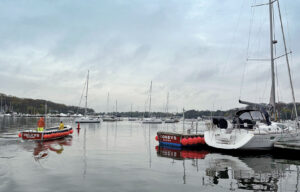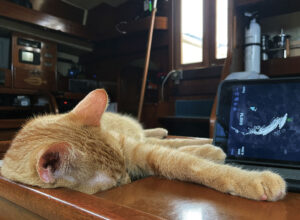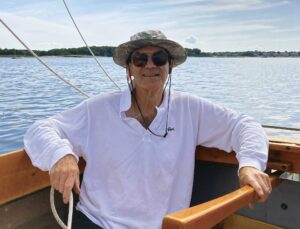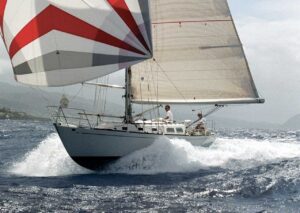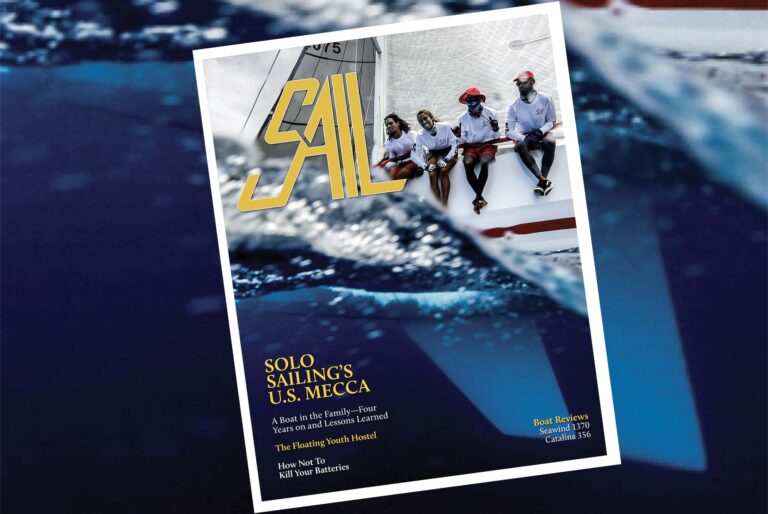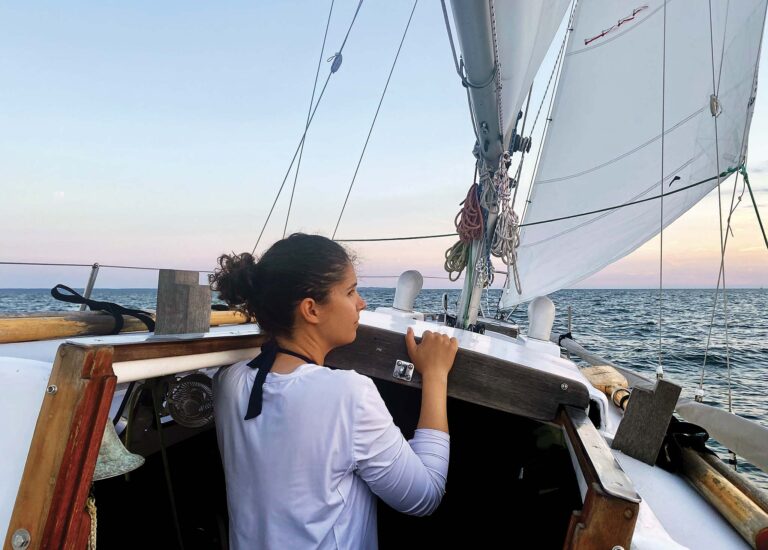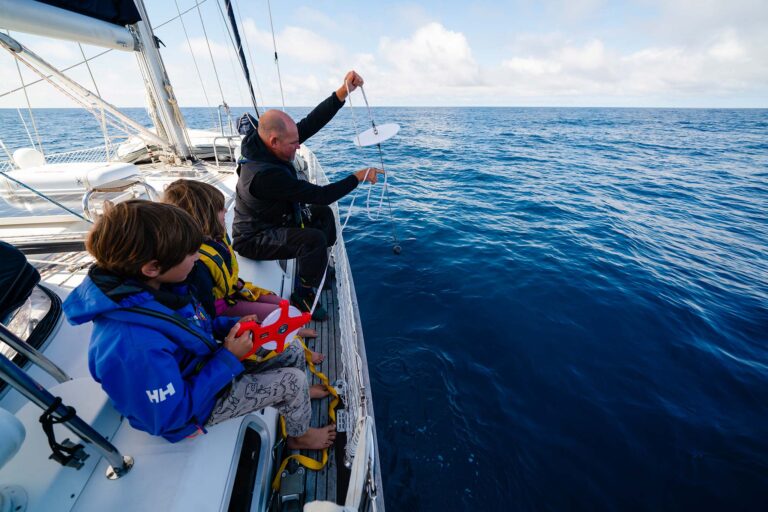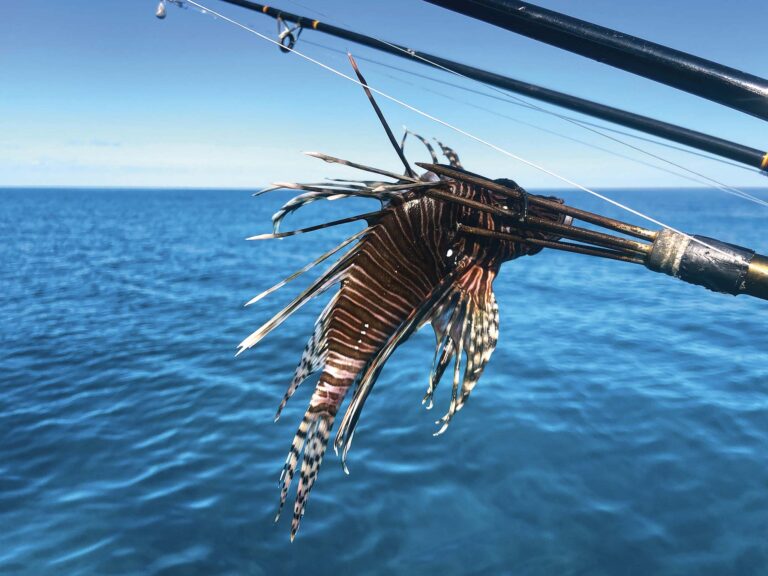“The coldest winter I ever spent was a summer in San Francisco.” Conversations about San Francisco’s weather always lead to this Mark Twain quote. It’s doubtful whether he ever actually said it, but the sentiment rings true. The San Joaquin Valley, to the east, heats up to scorching temperatures by day and creates low pressure that draws cold air off the Pacific. The low point in the coastal range is the Golden Gate, and this is where the cold wog (wind and fog) pours through. This makes for spirited sailing on the Bay, but it can leave a sailor feeling downright cheated when the rest of the state is bathed in sun. The solution is to ride these summer winds to the warmth that draws them: the Sacramento-San Joaquin River Delta, east of San Francisco Bay. With summer air and water temperatures 20 to 30 degrees higher than the Golden Gate, a Delta cruise is a beloved summer tradition for Bay Area sailors.
After a ten-year circumnavigation, I was about to make my first foray to the Delta since childhood. I have fond memories of trips on the family boat, swimming in the fresh water, picking blackberries and raiding abandoned duck blinds in the reeds. I didn’t pay any attention to charts back then, and my only specific memory was a place called Five Fingers, where a wooded island was indented by five inlets, each a perfect anchorage.
My girlfriend, Alison, and I set sail from San Francisco on a Monday morning, which felt especially gratifying since everyone else was heading off to work. The wind was howling at 0830, letting us raise sail right off the dock and ride the current east on Condesa, my 40-foot Nicholson ketch. It’s crucial to time the tides since the currents reach 3 knots through some of San Francisco Bay’s straits.
A Checkered Past
The Delta drains about 40 percent of California’s land area through a network of 700 miles of channels. It is a rare inverted river delta, meaning that the estuary fans out, then converges again to flow through the narrow Carquinez Strait and into San Francisco Bay. Before the California Gold Rush the outside world took little notice of the Delta’s yearly flooding and the mass migrations of birds, salmon and trout. Everything changed in 1848-1849 when these waterways had to transport the Forty-Niners to gold fields upstream and carry inland crops downstream to feed an exploding San Francisco population. Soon all manner of craft, from local scow-schooners to paddlewheel steamboats, were zipping from San Francisco up the Delta to Sacramento, the nascent state capital, and all ports in between.
In the 1850s, settlers who enjoyed the Delta’s fertile peat soils, but deplored the unfortunate yearly flooding, built the first levees, mostly using inexpensive Chinese labor. Soon many miles of fragile levees created dozens of islands, or tracts. By the years following World War I, virtually all of the Delta’s marshland had been reclaimed and the entire estuary was contained within walls, creating some of the most productive farmland in the country. In 1960, construction began on the California Aqueduct, which carries Delta water to Southern California.
Today, environmental groups claim this is the nation’s most threatened waterway, with many species of birds, animals and fish at risk. Environmentalists battle farmers and the state in the courts as they contest how much water can be piped out of this ecosystem and how many contaminants can be added before it collapses.
Into the Channels
An impending environmental collapse of a critical watershed built by exploited Chinese laborers? It’s hard to believe when you’re sailing 70 miles in ten hours, all downwind, riding the flood tide while you watch the sunny landscape fall by the quarter.
A day that began in foul-weather gear ended in bathing suits as we anchored under sail in Steamboat Slough. On the way we passed the giant C&H Sugar factory in Carquinez Strait and the massive rafts of mothballed U.S. reserve fleet ships anchored in Suisun Bay. A quick dip in 72-degree fresh water took us into cocktail hour and a lazy week of cruising.
The next morning would bring our first bridge, the bascule bridge to get out of Steamboat Slough and into the Sacramento River. There are over 50 bridges in the Delta—lift bridges, draw bridges, swing bridges, and bascule bridges—and over the next week we’d pass about fifteen. Most are manned all day, some around the clock, some only by appointment. The bridgekeepers monitor channel 9 and usually seem happy to hear from you. River traffic has declined over the years to be replaced by trucking, so being a bridgekeeper seems like the right job if you like to read. Some were completely automated, but the Mandeville Island bridgekeeper had to walk to both sides to stop the traffic, then walk back to the middle of the bridge to fire up a big diesel to swing the bridge open.

